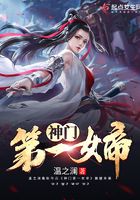Ⅰ. Reading Str ategy: Dist ingu ishing Fa ct fr om Opinion
Facts and opinions are both used by a writer to support the main idea of a piece ofwriting. In order to attain a higher level of comprehension,you should acquire theability to distinguish facts from opinions in reading. With this ability,you can readcritically,so that you will not accept everything you read as fact.
A fact is a statement that can be proven true through objective evidence such asobservation or experimentation. It is also defined as something that actually exists,orthat everyone agrees is true. But it should be noticed that there are true facts and falsefacts . For example,the statement the sun moved around the ear th is obviously a falsefact as it has long been proven wrong.
An opinion,on the other hand,is a statement that cannot be objectively proventrue or false. It usually refers to one??s personal belief,feeling or judgment aboutsomething. An opinion,therefore,is open to debate even if it is based on fact. Thereare words that can serve as clues to statements of opinion. For example,words like Ibelieve,I think,in my opinion,I feel,and I suggest,show clearly that an opinionwill follow. Words like proba bly,perhaps,usua lly,often,sometimes,and onoccasion,are used to indicate the possibility of other opinions. Besides,opinionstatements usually have“ qualifier words”which represent opinions. Some of suchwords are: best,worst,great,ter rible,and wonder ful. However,looking for cluewords is far from enough for you to keep opinions from facts,as sometimes opinionsmay be masked as facts,which means they can be written so that they appear to befacts. This is especially true when someone is quoted. For example,Paul Freiberger,a technology expert,is quoted in Fuzzy Logic Sma rt Machines as follows: “ It??s atechnology that will change forever the way we deal with machines. ”This is just thespeaker??s opinion,one that would be shared by some people but not likely by all. Aquotation does not necessarily make a statement a fact. If a quotation is a fact,then itscontent must be factual. For example,you are dealing with a fact when Zadeh,acomputer science professor says in the same piece of writing,“ Computers dependupon exact information to do their work. We don??t. ”
Ⅱ. Applying the Read ing Str ategy
In this part,you are required to use the reading strategy you have just learned.
Read the following statements and decide whether they are facts or opinions.
1. The use of the motorcar is becoming more and more widespread in the twentiethcentury.
2. The feeling of independence,and the freedom to go where you please,is perhapsthe greatest advantage of the car .
3. Television is a great time-waster .
4. Television encourages passive enjoyment.
5. According to the August 10th issue of The Youth,out of 30,000 school graduatesin Shanghai who could take the college entrance examination this year ,only 23,000 sat for it.
6. There is not much point in going to college anyway because you can hardly everget an ideal job after you graduate.
7. Statistics show that rapid population growth creates problems for developingcountries.
8. It is only when people??s living standards begin to rise that birth rates begin to fall.
9. The housing reform gives the rich minority rather than the average majority achance to live better.
10. Vacant buildings ought to be turned into apartment buildings for the homeless.
Ⅲ. Reading Task
A. Pr e-r eading act ivity
Since the announcement of the birth of Dolly,the first mammal cloned from anadult cell,the fierce debate revolving around the issue of cloning a human being hasgreatly expanded. After being diagnosed with progressive lung disease,Dolly??s lifewas taken to an end by her creators. Her relatively early death in February 2003 fuelsthe debate. What??s your attitude towards human cloning? Do you think if scientistswill succeed in cloning a human in the near future in spite of people??s objections? Doyou agree or disagree that it??s worth the risk to clone a human being?
B. Reading
Prepare for disaster . That was the level of pessimism when veterinary researchersJonathan Hill and Mark Westhusin got ready to deliver the world??s first cloned bull atTexas A &M University a year and a half ago. And the scientists had good reason tobe pessimistic: several years of animal cloning work had taught them that most clonedanimals never even make it to birth,and the rare ones that do all too frequently haveproblems ranging from physical deformities to life-threatening medical conditions.This cream-colored calf,named Second Chance,was no exception.“ In his firstweek he was near death,” recalls Hill. He had underdeveloped lungs,like apremature baby. He had diabetes,anemia,a skin infection,and so many othercomplications that Hill can??t even recall them all. The calf spent his first few dayshooked up to intensive care machines.
Today,Second Chance grazes serenely in a pasture outside Austin,to allappearances just one more healthy bull in the herd. But if Second Chance??s healthproblems are behind him,many other animal clones have not fared so well. Indeed,the catalog of illnesses in cloned animals includes everything from blood vesselabnormalities and fatty livers to weak immune systems and deformed heads.
Such are the perils of taking cloning out of agricultural research labs and intofertility clinics. What if instead of Second Chance it had been a human baby hookedup to those life support machines? What if the baby had never recovered from thehealth problems,or indeed had died as many cloned animals do? The fierce debateover human cloning shifted from theoretical moral objections to practical safetyconcerns last week as researchers gathered in Italy for the first serious scientificmeeting devoted to human cloning.
Last week??s conference was organized by two experts with experience in cuttingedgereproductive technology; Panos Zavos,who runs a fertility clinic in Lexington,Ky. ,and Italian fertility doctor Severino Antinori. They plan to clone a human withintwo years,and many scientists don??t doubt that they??ll succeed.















